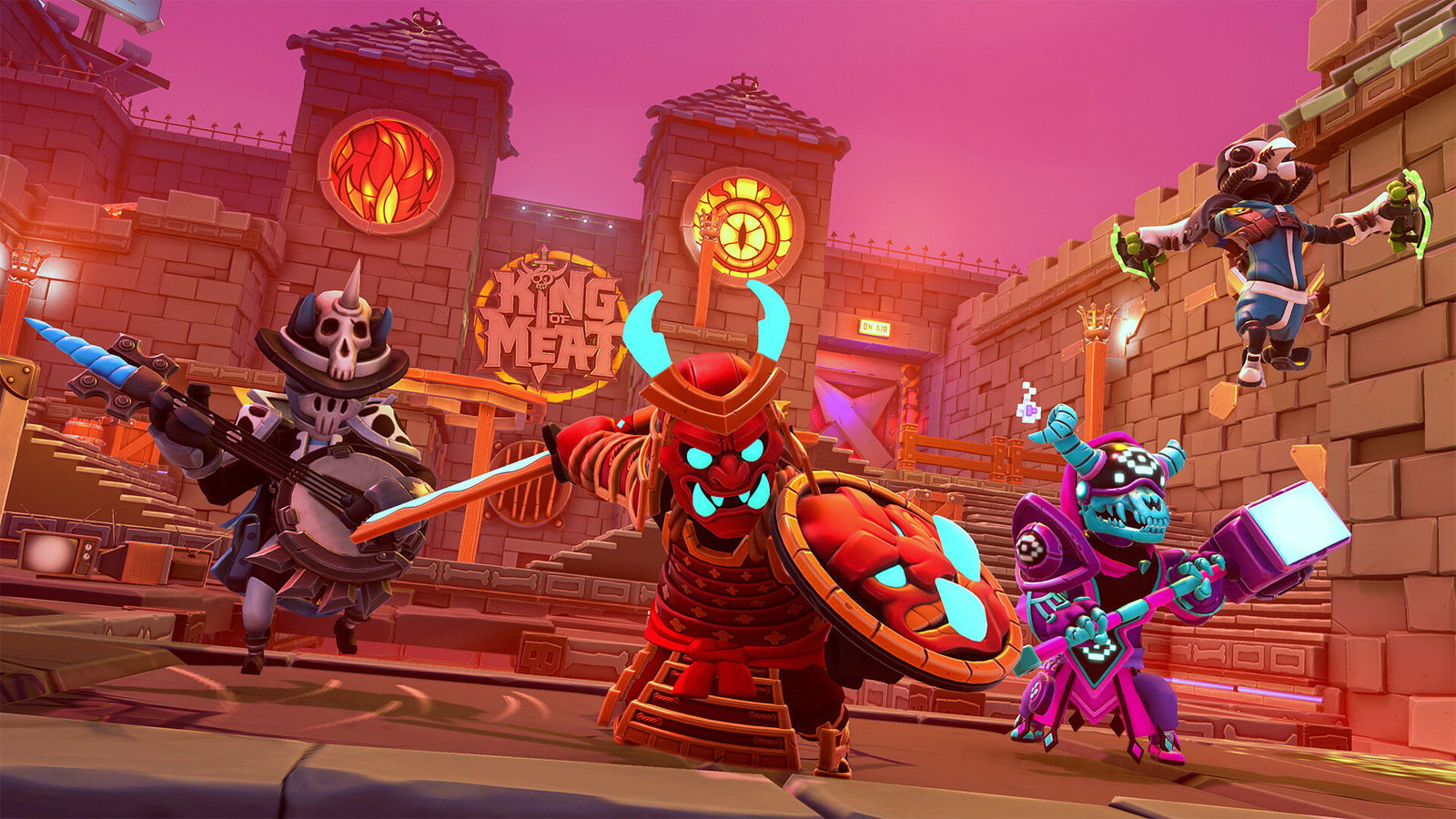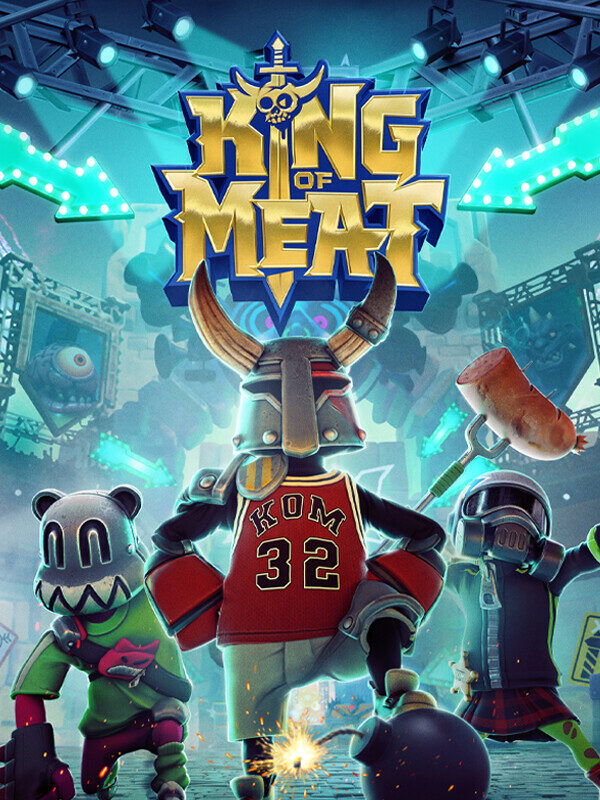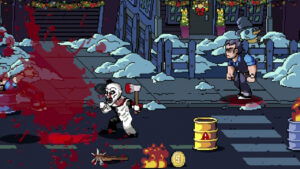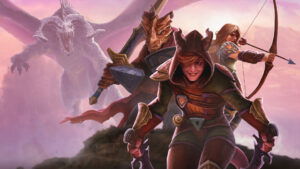My religion in the early 2000s could be described as Fusion Frenzy and Spike TV. When everyone was hitting the sticks for a game of Mario Party, I was downing Mountain Dew at 12:30 a.m., watching Most Extreme Elimination Challenge (MXC), and laughing (quietly to not wake Grandma) at the hilarity of full-sized human adults being put through the obstacle courses of Takeshi’s Castle.
The obvious over-the-top voice-overs helped immerse my younger self in the lore of the show, which was intensely funny and juvenile. This is exactly what King of Meat can be described as. King of Meat brings back the guilty pleasure of staying up far too late for antics, but instead of cheering for a team of self-proclaimed Outdoorsmen or Educators like other game shows, you’re thrown into the obstacle course yourself as another fresh rookie looking to become the King of Meat.
Very much like how Fuzion Frenzy and Spike TV were for me, King of Meat is the religion of Loregok. King of Meat is an obstacle-filled game show that asks contestants to jump, dodge, dive, maim and make it to the finish for treasure and glory. As a preacher of this religion, it is up to you to remain as entertaining as possible to keep the crowd engaged (and maybe off their phones).
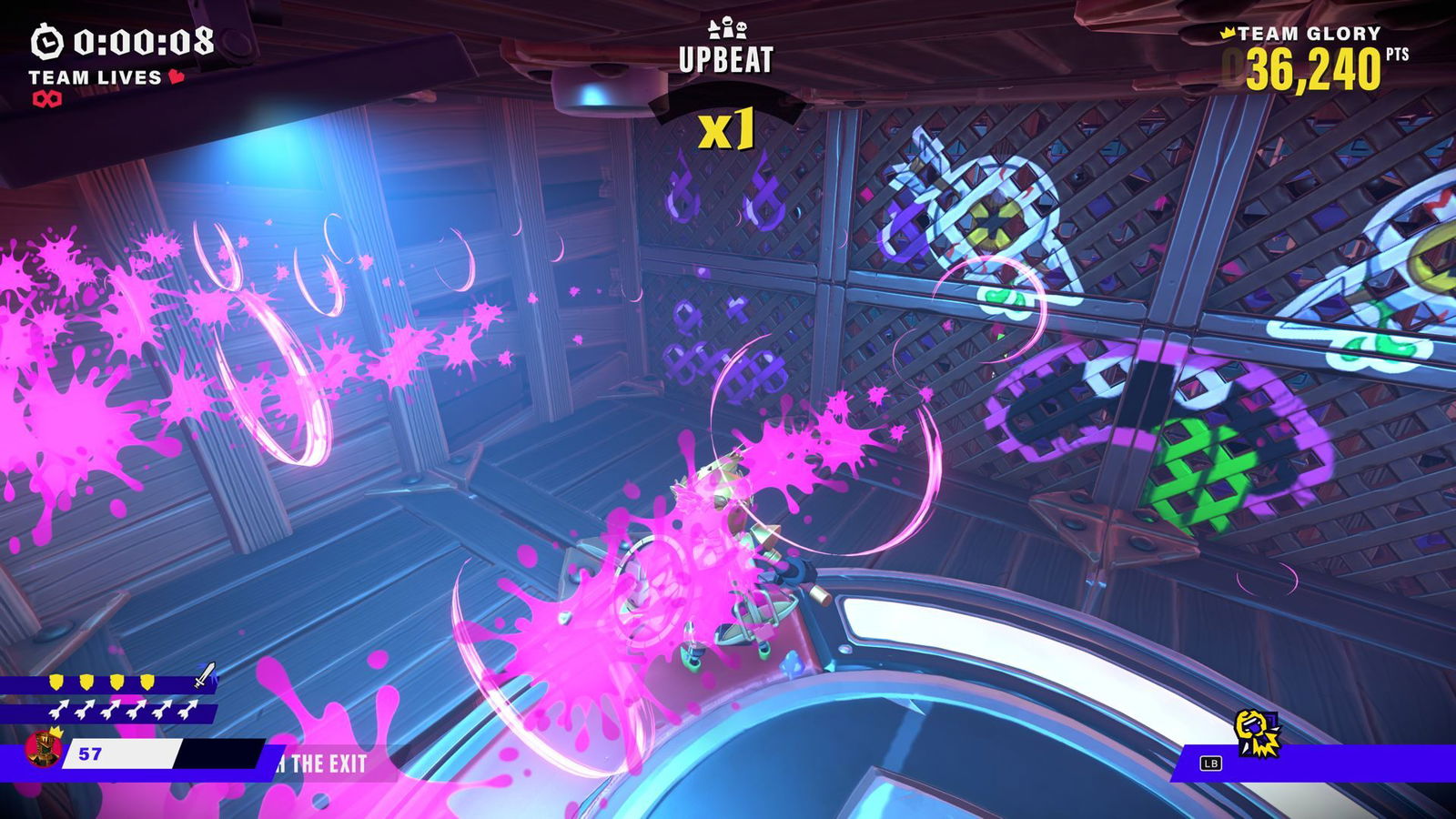
Like MXC, King of Meat deploys a game show approach filled with the droning of a resident announcer. Regarded as just “The Commentator,” this voice will follow you around the entire game, and actor Al Doyle takes great care bringing this voice to life with exuberance and believable tenacity. This background commentary seasons King of Meat with authenticity and almost taunts you into doing better in the courses. Like other good commentators, Doyle does an excellent job of also making you laugh at yourself for making dumb mistakes, tossing King of Meat into the ‘fun, not frustrating’ pile of platformers. Game shows are only as strong as their voice, and King of Meat is tough.
“…you’re thrown into the obstacle course yourself as another fresh rookie looking to become the King of Meat.”
The hub world of Loregok is referred to as The Iron Law Plaza, and this is where contestants can jump into training courses, challenge courses, talk to the NPCs of the world, and even shop for new goods that can make or break their time in dungeon runs. The shopkeepers and NPCs are varied and all sport zany looks that could’ve been pulled from different universes in Rick and Morty. They all help you succeed in dungeon runs by outfitting you with new weapons, items and glory moves and sometimes offer helpful hints on gameplay. The hallmarks of a solid hub world.
If entertainment is being served with King of Meat, everyone hasn’t eaten in weeks. This is what the crowd would lead contestants to believe. After throwing on a very poorly placed suit-and-tie (and medieval battle helmet), like the Xbox 360 ad, I was ready to “jump in.” Matchmaking in King of Meat gives you the option to select from a series of playlists for similarly seasoned players to jump in together, or you can just avoid that choice-making and hit quick play.
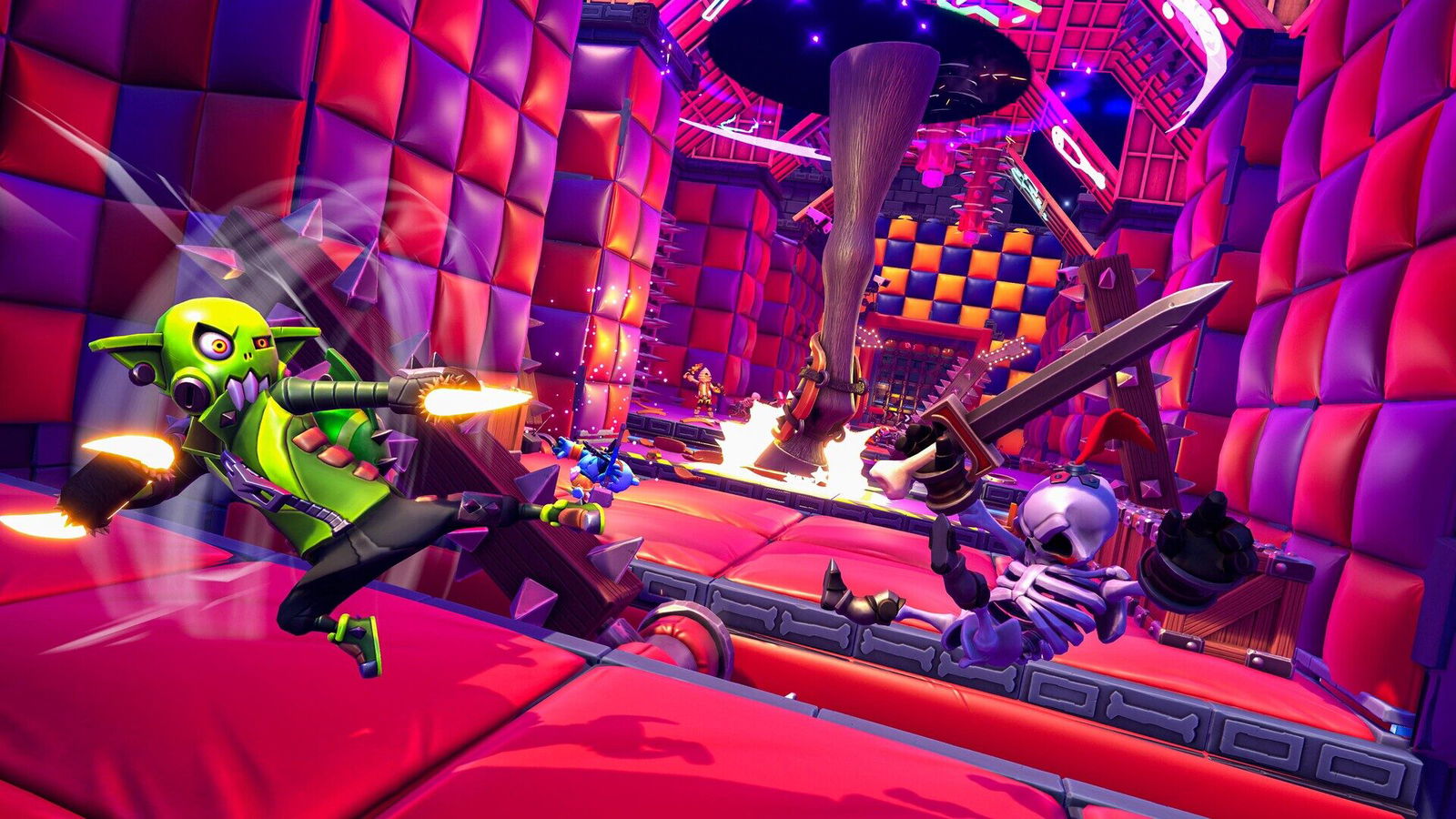
After this, and matching up with up to three more players, you’re shown into the stage select lobby, where you and your comrades will select which dungeon you will be facing. On this screen, members of your troupe get a choice to vote for the next challenge arena your party is going up against, and popularity numbers are shown. Unlike other titles with a similar stage selection, these popularity numbers in King of Meat don’t give the player any descriptor on the map; instead, it lets other players rate the map as what they believe it is.
This is a crash course in community development. Instead of the developers themselves telling you what to think, after a stage ends, other players can vote on a specific set of keywords to describe the stage. Words like “Challenging” can be seen as a descriptor, but because this is an opinion, these descriptors can be hilariously misleading and can differ from contestant to contestant. These can range from challenging platforming sequences to battling many creatures that swarm the battlefield and everything in between.
After voting for a stage that said “Deadly” called “Light it up,” I was ready with my fellow King of Meat contestants to enter the Komstruct Koliseum. This one was loaded with spinning blades, thin platforms, and many ways to meet your end. If you do die, you can respawn as an overly-processed loaf of canned meat in a respawn chamber.
Instead of the glamorous Vita Chamber from Bioshock, you’re reborn as the gelatinous cube equivalent of contestant flesh. This is called the Meat Phoenix. As you shake off the excess juice from the can you have emerged from, you’re reborn anew. Teams need to remain vigilant, though, there are only a limited number of respawns per map, and losing all lives means game over.
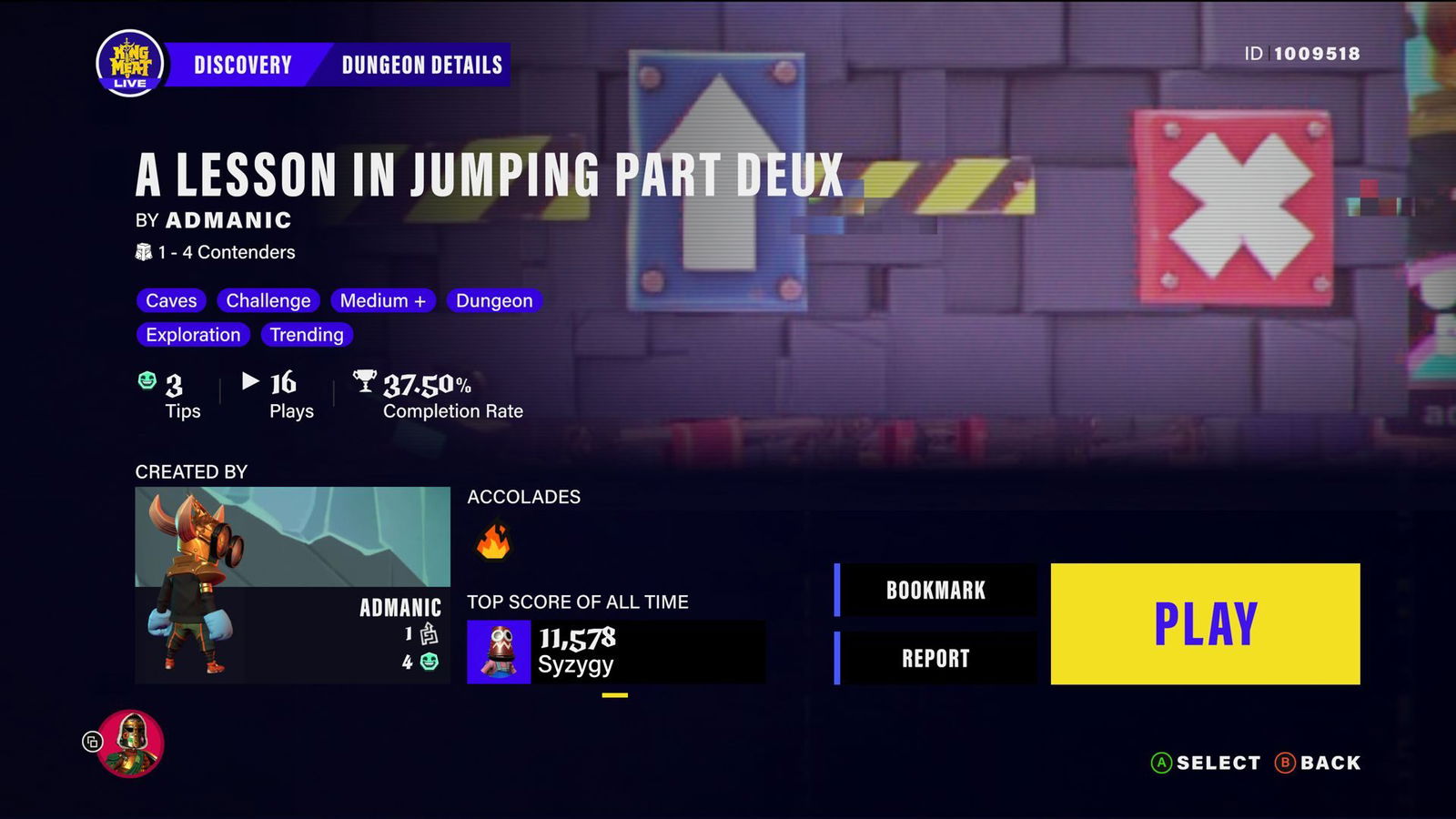
The physics in King of Meat are hilariously efficient. When these totems spin and smack you, you can fly quite far depending on how fast the fan blades are spinning. Stage hazards can range from pendulum swinging hammers reminiscent of Dark Souls’ Sen’s Fortress, to running in a circle and jumping over a tripping obstacle like in a mini-game seen in Fuzion Frenzy. The most important thing, however, is keeping the audience entertained, and your pockets lined with treasure.
In each Komstruct Koliseum, contestants can find valuables hidden throughout the stage, including well-hidden treasure chests and platforms that require more than one contestant to tackle. While King of Meat can be driven solo, it’s always better to hang with friends. While dodging obstacles, small skeletons and bigger knight-armour dressed adversaries will try to cut your run short, so each contestant is outfitted with melee and ranged options to satisfy the entertainment needs of the crowd.
“While King of Meat can be driven solo, it’s always better to hang with friends.”
While King of Meat will receive no accolades for its basic fighting system, the chaos that can ensue from an encounter adds to the formula. You can use button presses in a pattern to hit smooth combos that will allow you to juggle enemies, or you can just press the shoulder buttons together to give opponents a good shove over the edge. You can even do this to teammates, which makes for a hilarious way to start an argument.
Stages can contain puzzles, as it’s not all platforming and combat against the jobber enemies of King of Meat. These well-thought-out puzzles from Glowmade make sense and are genuinely fun to figure out. These can range from hitting switches in an orderly fashion to shooting mannequins that have a target or an X over their face. Shooting the targets is encouraged. Shooting the X grants divine punishment (or enemies to spawn in).
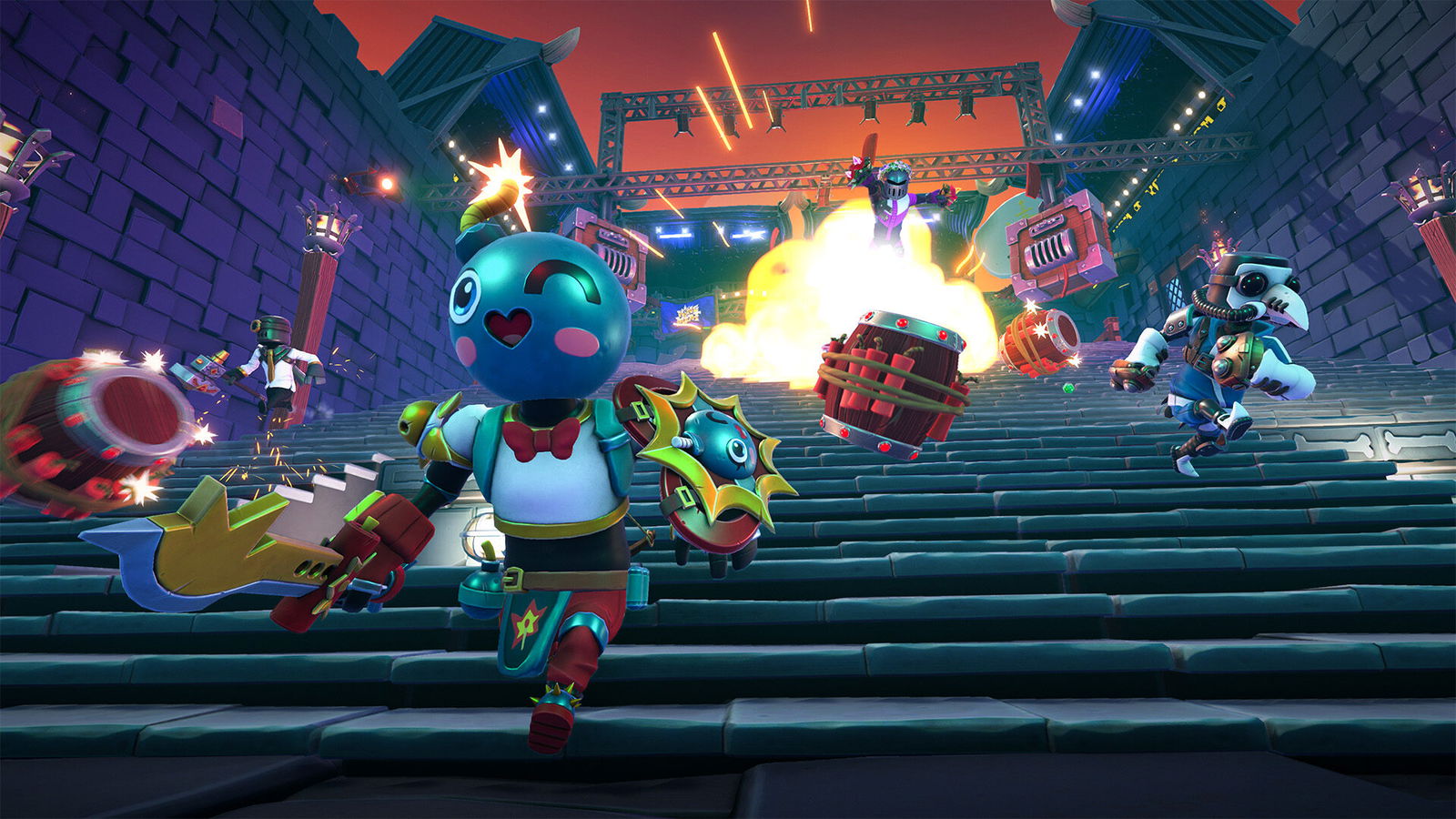
While running through the Komstruct Koliseum crucible, contestants can deploy Glory Moves that have hilarious effects. A super belch can send opponents (and teammates) flying over the edge, and there are healing effects for the natural support classes. My favourite (that I’ve unlocked so far) was the appearance of a horse leg coming from out of nowhere to stomp foes like Bayonetta’s Heel Stomp from the Gates of Hell, except a lot more equestrian.
The atmosphere of King of Meat is sewn together with a soundtrack that could be used in an overeating montage like YouTube’s Epic Meal Time, and it keeps the blood moving throughout stages. After finishing a stage, you jump up on a podium (literally putting yourself on a pedestal) as the stage concludes. While most of the levels I played in King of Meat were designed by Glowmade, fans can make their own Komstruct Koliseum levels.
My favourite stage I ran into in King of Meat is called “The One With The Cogs,” and it was surprising to find out it wasn’t made by the developers, but another contestant. King of Meat puts stage design in the players’ hands and lets you replicate basically anything that you can see during the Glowmade stages, but in your own design.
Like Super Mario Maker, this allows stage select to remain varied and replayable, while also allowing fans to craft some seriously cool designs for players to contend with. As a bonus, you can follow your favourite creators to make sure you don’t miss a level drop. King of Meat is made by the celebrities of Loregok, for the celebrities of Loregok.
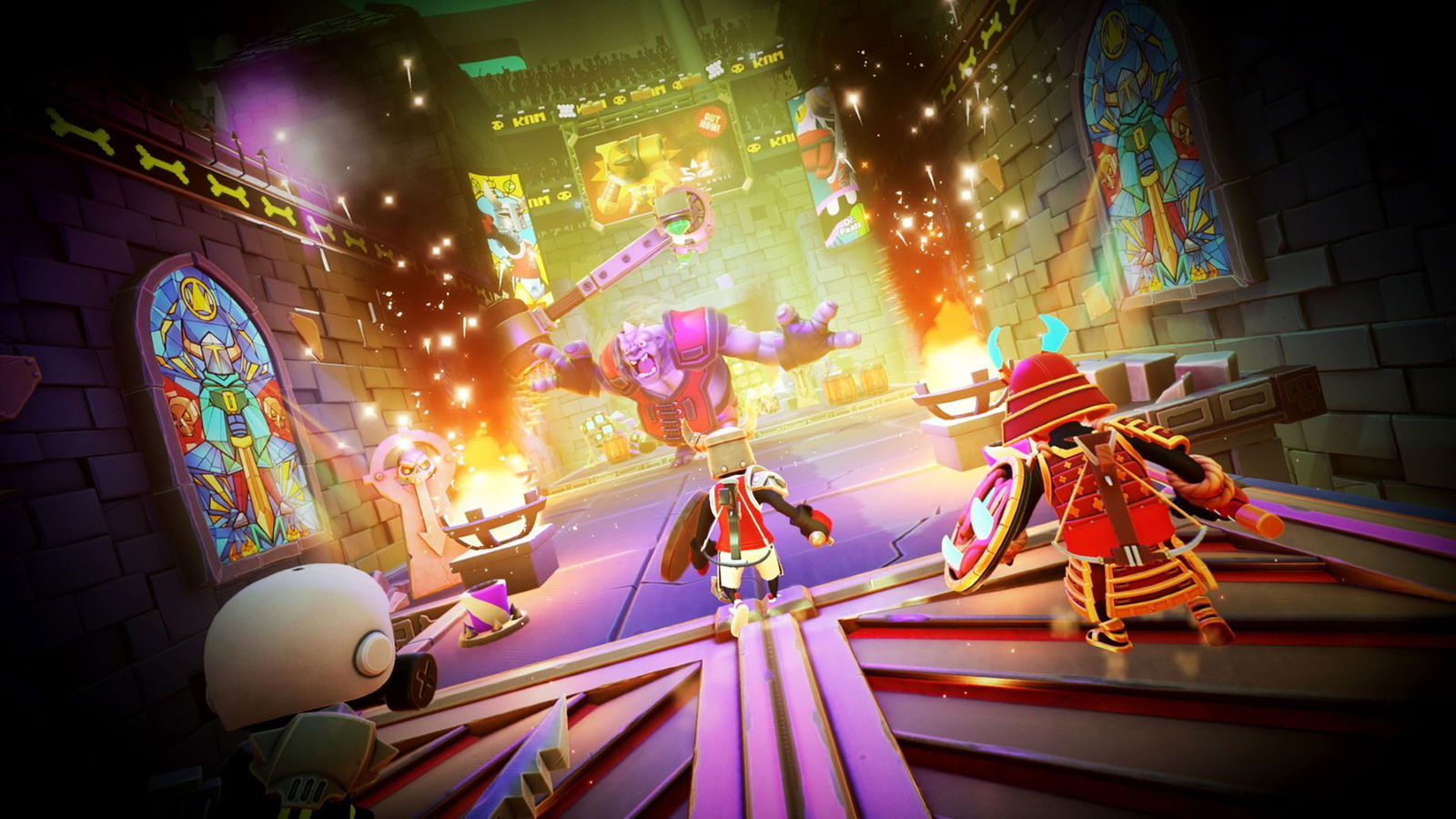
My main gripe with King of Meat is its occasional lack of direction. Crowd multipliers are timed affairs, so it affects your overall score if you drag your feet while exploring a stage. On certain stages (designed by Glowmade), it’s hard to determine where you’re supposed to go next. This can bring a x4 multiplier to x1 in a minute, and it just feels bad being punished for looking for where you’re supposed to go next.
It’s also baffling (and a disservice) that King of Meat has no local multiplayer. The raucous and outrageous nature of gameplay screams “play me on a couch with friends!” so it was disheartening to learn that the screen has been left on the cutting room floor.
King of Meat is a new-age party game, and it rocks. Entering the Komstruct Koliseum to see what you can take on is a genuinely fun experience, and the obstacle course in practice is smooth and a blast to play. The gameplay loop of jumping into each stage and crossing the finish is fun, but with friends, it’s a huge event that’s filled with laughs and good times. While playing Fuzion Frenzy with friends was excellent on the couch for the original Xbox, King of Meat feels like the next step in the genre, albeit confined to online-only requirements. Move over, Fall Guys, a new game show is in town, except it’s a lot meatier.
